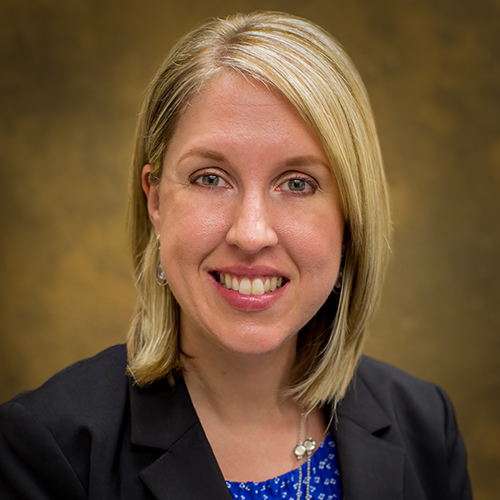
Picture this: You did it. You graduated OT school! After the years of studying, practical examinations, more studying, and traveling for fieldwork rotations, you can finally say you are done. Finito! Finished with all things academia! Woo-hoo! You are settling in at your new job and loving every minute of it. Before you know it, a year has passed and now they are asking you to take a fieldwork student. Wait a second, am I ready? I feel like I just got started!
Have you ever found yourself in this position? Regardless of how many years of practice you have, supporting the success of an OT fieldwork student (especially Level II) can seem overwhelming.
However, the American OT Association thinks you are ready for a Level I student right away, and a level II student after one year in practice post initial certification as discussed here. So if your place of employment thinks you are ready, and AOTA thinks you are ready, you may find yourself supervising a student earlier than you imagined! Here are some things you can do to make this first time (and any time after that) go as smoothly as possible.
8 Tips for OT Fieldwork Educators
1. Know your student’s program
While occupational therapy accreditation clearly outlines the minimal requirements for OTs at each of the three points of entry, each academic institution has the ability to address the accreditation standards in their own way, often with a focus on the institution’s mission, vision, and values. For this reason, each program will be unique, even if they are offering the same degree level!
A quick way to learn about what the school really values is to check out their website. From there, you will get a pretty good understanding of whether this is a student who has good research skills, multiple service experiences, exposure to international considerations, etc. These institutional “threads” often have a big impact on the way in which your student views the OT world. The more insight you can have into that, the better! For example, check out our program at www.methodistcollege.edu/mot. You’ll see how a quick review of a program’s website can really help.
2. Provide a quality orientation
Students who are provided with a high-quality orientation (especially during Level II) often have more confidence and develop their independence much earlier than those who indicate they were left to “figure things out.” Orientations are so important that AOTA recommends Academic Fieldwork Coordinators make a special point to ask about orientations in their mid-term assessment. A high-quality orientation will go a long way in making the student feel welcome and set them up for success at your site.
3. Know the student
A well-prepared student will likely email you in advance, asking questions about your site. This is a great opportunity to learn more about the student as well! In addition to answering their questions, take the opportunity to ask them questions too! For example, ask them what they are most excited about for the fieldwork, and what they are most nervous about? Just knowing that they are safe to ask questions and openly discuss their excitement and concerns will help you connect with the student right away. It also gives you insight into some student-specific things you might want to consider doing to strengthen their experience, and hopefully make things go smoother for the both of you.
I remember one time a student expressed to me near the end of the fieldwork that they were disappointed that they hadn’t gotten to watch a surgery! I am so glad that they felt safe to express this to me, as they did have that opportunity! I just hadn’t asked them about it or set it up yet. It takes a special kind of student to make it through something like that, so I was glad to have that information and her fieldwork experience was more meaningful this way.
4. Be flexible
The longer you have worked somewhere, the more likely it is that you have a pretty good system for managing your workload. If you have the managerial support for a bit more flexibility in your day the first few days, the student is more likely to start off strong (which is good for the both of you). This theme arose in my doctoral research related to productivity and its’ impact on fieldwork, available here.
5. Be open-minded
The student is likely fresh out of reading all about where OT will be in five years, ten years, and so on. Depending on your practice site, advances in OT and practice trends may be slower to adopt. Keep an open mind to their ideas. Sometimes that fresh energy is just what a practice site needs!
6. Practice “bracketing feedback”
The role of the fieldwork educator requires giving feedback more often than not. However, some students receive this better than others. As an academic, I am very fond of a technique called “bracketing” that I often use when delivering information that may be a bit harder to accept. It goes like this; Start by telling the student something good/ positive that they did, then give the constructive criticism, then wrap it up with something positive. For example, “Nice job bringing yourself down to the clients level when asking those questions. Next time, it would be even more effective if you also involved the spouse in the questioning since he indicated she is his primary caregiver. You’re making good progress this week!”
7. Keep clear boundaries
Just like in the classroom, it is important for there to be solid professional boundaries between the fieldwork educator and fieldwork student. This doesn’t mean you can’t be friendly, you just should really be friends quite yet. Truly, this is for your protection and the protection of the student. It is your job to provide open and honest feedback to the student, and that can be difficult through rose-colored glasses. Dr. Jane Bluestein discusses the concept of boundaries in a quick read from EducationWorld.
8. Be involved!
It is likely that the student is paying attention to more than just what you do clinically. They are listening to what you are passionate about, how you advocate for your clients and your profession as well. Being a good role model for professional service through membership in your state and national association not only sets the stage for the students career, but advances the issues facing OT as a whole. Fieldwork is a great time to show the student how you stay on top of legislation and policy issues that would directly impact the clients in which you serve.
Fieldwork education is vital in reaching our profession’s goals as outlined in the Centennial Vision, and for those of us in academic institutions, we could never achieve our missions without you. I am pretty sure I can speak for many programs when I say “thank you, truly, for your support.” We are always here to support you as you grow and develop into the best fieldwork educator you can be.
Keep shining.
MK
References
American Occupational Therapy Association. (2016). Answers to your fieldwork questions. Retrieved from http://www.aota.org/education-careers/fieldwork/answers.aspx
American Occupational Therapy Association. (2016). Washington university school of medicine program in occupational therapy: Level II fieldwork mid-term feedback form. Retrieved from http://www.aota.org/-/media/Corporate/Files/EducationCareers/Educators/Fieldwork/LevelII/level2midfd.pdf
Bluestein, J. (2012). The art of setting boundaries. Retrieved from http://www.educationworld.com/a_curr/bluestein-setting-student-boundaries.shtml
Kimmerling. M. (2014). The impact of productivity standards on level II occupational therapy student supervision (Doctoral dissertation). Retrieved from http://www.csm.edu/sites/default/files/Kimmerling_Dissertation.pdf
Nebraska Methodist College. (2016). Occupational therapy, MOT. Retrieved from http://www.methodistcollege.edu/allied-health/master-degree/occupational-therapy

Dr. Melissa Kimmerling is the Program Director for the Candidate Master in Occupational Therapy Program at Nebraska Methodist College. Her clinical experience includes acute care, skilled nursing, home health, outpatient, consultation, and program development. She currently serves as the Secretary of the Nebraska Occupational Therapy Association and will begin her term as the representative from the state of Nebraska to the Representative Assembly of AOTA. She has served as a NOTA conference co-chair for two years. She currently lives in Papillion with her husband, son, dog, and two cats.

2 replies on “8 Tips for Being the Best OT Fieldwork Educator You Can Be”
Hi! I recently finished working with a Level I student (and I just hit my one year mark at the hospital today! :D), and I was really nervous when we first started. This actually seemed to work in my favor, since my student was also nervous, so we constantly kept each other motivated with questions and constructive criticism. The most challenging part of having a student for me, though, was keeping up with my units and staying focused. I obviously always welcomed her questions, but I’m terrible at multitasking. Even without a student, I usually try to find a corner away from everyone whenever possible to write my notes. Any advice there?
Yes! I hear you! I started having students before I was fully settled into new jobs! So good that you were able to be open about your nerves and that it worked in your favor.
Keeping up with units is difficult for anyone in their first year and can be even more difficult when you have a student. (I’ve even struggled when I had people shadow). It can especially be difficult to know how to balance time when you student is struggling to meet requirements.
I found it helpful to set student’s expectations at the start…something like- "I’m terrible at multi-tasking so for me it is easiest if I have some focused time to write my notes. You can look at my notes and ask me questions when I’m done. But there will be a little slot of time for you each day to work on your own FW requirements or an on-site project…or practice writing your own documentation from the session- then we can compare notes afterward!"
Working out a schedule for the day is especially helpful when you have FW II students!